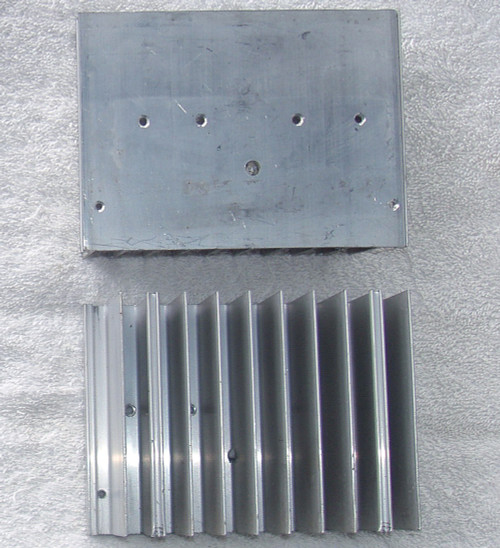To many this item is just a used lump of aluminium but I am big on reusing or repurposing old electronic components and hardware, particularly from the point of view of sustainability.
Sustainability far more than NOT burying waste material back into the earth but consciously recognising the energy expended to create the item through it's various "stages" in life, beginning with the raw materials being extracted from the earth, processed, finished and then fitted into equipment - every single step used energy which is referred to as embodied energy.
To give an approximate representation of how much energy was used in the WHOLE production process of an item, I have created what I refer to as the Ee (Embodied Energy) value, measured in Mj
The Ee value is an approximation only and usually measured in Mj.
Coming up with an Ee value is an attempt to take into account the energy used for extracting and processing of the raw materials, manufacturing of the component, distribution of the component(s) and final assembly of the component. In fact the measurement of Ee can become extremely complicated and technical, many tertiary institutions are involved in this specialised field of science.
I have used various reliable sources online to arrive at approximate Ee values, these are approximations and the sole purpose is to raise awareness of the extraordinary energy consumed in the creation of various electronic components and hardware - it may give you cause to think twice before wasting all that energy and burying it in the ground, with the possible side-effects of poisoning the environment due to leeching.
HERE is a page I have created which gives some tables and more detailed information about specific Ee values for different materials plus a link which you can use as a starting point to investigate Ee for yourself.
This heatsink block has an Ee value of 100 ~ 120Mj
Great for a custom project or upgrading the heat disappation capabilities of equipment such as an audio power output stages or DC power supplies.
Raw Aluminium Heatsink
Multiple fins to assist in heat dissipation
No thermal resistance figures are available
MEASUREMENTS:
230mm x 83mm x 39mm
Substantial heatsink at 650g
Base area thickness is a uniform 5.0mm
Vertical fins are all 3.0mm thick
There are a total of 9 vertical fins, all are 34mm height off the base
Threaded mounting holes are on one side only, three of them. There is nothing to stop the new owner adding new holes to suit their purpose (3mm thick aluminium)
In it's original life, this heatsink had multiple TO-264 wide flat power devices fitted onto the 'underside' - there are 8 threaded holes in total for device mounting with plenty of opportunity to add new holes to suit the devices being fitted (drilling through 5mm aluminium)
All silicon grease has been removed.










